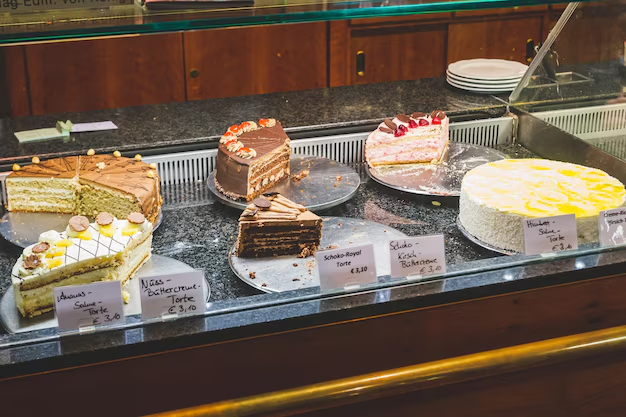How Long Does Cheesecake Last in the Refrigerator?
Cheesecake is a creamy, indulgent dessert that never seems to go out of style. Whether it's a classic New York cheesecake, a decadent chocolate swirl, or a zesty lemon-flavored variety, this beloved treat has a way of captivating dessert lovers everywhere. But once you've made or bought it, a crucial question arises: how long does cheesecake really last in the refrigerator? Maintaining its fresh, delightful taste requires careful attention to storage. Let's delve into this essential aspect of cheesecake longevity and explore some practical tips to keep this dessert at its best.
The Shelf Life of Cheesecake: A Brief Overview
Understanding Cheesecake's Lifespan
Cheesecake primarily consists of ingredients like cream cheese, eggs, and sometimes sour cream or other dairy products. This composition makes it perishable and sensitive to temperature changes. Generally, cheesecake stored in the refrigerator remains safe to eat for about 5 to 7 days. However, this can vary based on factors such as the specific recipe, how it was made, and how it is stored.
Key Factors Influencing Cheesecake's Shelf Life:
- Ingredients and recipe variations: Different recipes include varying amounts of perishable ingredients, impacting shelf life.
- Storage conditions: The temperature of your refrigerator and how well the cheesecake is covered can extend or shorten its lifespan.
- Preservatives: Cheesecakes from stores may contain preservatives to enhance shelf life.
Homemade vs. Store-Bought Cheesecake
Homemade Cheesecake:
- Typically lacks preservatives.
- Best consumed within a shorter timeframe.
Store-Bought Cheesecake:
- Often includes preservatives, which can extend refrigerator life slightly.
Tips for Prolonging Cheesecake's Freshness
- Store Properly: Keep it in an airtight container to minimize exposure to air.
- Refrigerate Immediately: As soon as your cheesecake cools to room temperature, refrigerate it.
- Check Temperature: Ensure your refrigerator maintains an optimal temperature of around 34-38°F (1-3°C).
Mastering Cheesecake Storage Techniques
Refrigeration Best Practices
When it comes to keeping your cheesecake fresh, storage is key. Refrigeration is crucial, but how you store it can make all the difference in taste and texture.
Step-by-Step Refrigeration Guide:
- Cool Before Storing: After baking, allow your cheesecake to cool completely at room temperature.
- Wrap it Right: Wrap the cheesecake in plastic wrap or aluminum foil. Ensure it's snug to prevent moisture loss.
- Use Airtight Containers: If possible, store the cheesecake in a cake container with a lid.
- Avoid Excess Handling: Only take out as much cheesecake as you plan to eat to avoid frequent temperature changes.
Freezing Cheesecake for Extended Shelf Life
If you're not planning to finish your cheesecake within a week, freezing might be your best option.
How to Freeze Cheesecake:
- Pre-Portion: Cut the cheesecake into slices before freezing. This allows you to thaw only the amount you'll eat.
- Double Wrap: Wrap each slice in plastic wrap and then in aluminum foil.
- Label Clearly: Ensure that the wrapping is labeled with the date for easy tracking.
Thawing Tips:
- Transfer the slices from the freezer to the refrigerator to defrost overnight.
- Avoid microwaving as it could negatively impact texture.
Recognizing Spoiled Cheesecake
To ensure you’re enjoying your cheesecake safely, understanding the signs of spoilage is crucial.
Signs Your Cheesecake Has Spoiled:
- Odd Smell: Cheesecake should have a mild, sweet aroma. A sour or unpleasant smell indicates spoilage.
- Texture Changes: If the cheesecake becomes excessively mushy or develops a grainy texture, it's likely past its prime.
- Visible Mold: Any sign of mold means the cheesecake is no longer safe to eat.
- Flavor Alterations: An off taste is a sure sign that the dessert has gone bad.
Quick Summary: Cheesecake Storage 💡
- Duration in Fridge: 5-7 days
- Ideal Temperature: 34-38°F (1-3°C)
- Use of Preservatives: Longer shelf life for store-bought
- Freezer: Up to several months with proper wrapping
- Spoilage Detection: Look for smell, texture, and mold
Exploring Variations and Their Impact on Shelf Life
Cheesecakes come in numerous variations, each offering unique flavors and textures. However, these differences can also influence how long they remain fresh.
Different Types of Cheesecakes
- New York Style: Dense and creamy, this classic cheesecake relies heavily on cream cheese, extending its rich taste.
- Italian Style: Using ricotta cheese, this version is lighter but just as delicious.
- No-Bake Cheesecake: Made without eggs and often involving gelatin or whipped cream, it may have a shorter shelf life due to different stabilizers.
Specialty Ingredients and Their Storage Effects
Incorporating Fruits or Nuts:
- Fruits like strawberries or blueberries add moisture, potentially reducing shelf life.
- Nuts can add texture but watch for oils that can turn rancid over time.
Chocolate, Caramel, or Other Add-Ons:
- Additions like chocolate or caramel can sometimes create moisture barriers, helping to prolong freshness. However, these should also be monitored for spoilage signs.
Practical Cheesecake Consumption Strategies
To make sure you're getting the most out of your cheesecake, consider a few simple strategies.
Buying or Baking in Moderation
Instead of over-purchasing or baking large quantities, aim for more frequent, smaller batches that are easier to consume within the recommended timeframe.
Creative Leftover Cheesecake Ideas
When nearing the end of its shelf life, consider using leftover cheesecake in a variety of dishes:
- Cheesecake Milkshake: Blend with ice cream for a delicious shake.
- Breakfast Parfait: Layer with yogurt and fruit for a sweet morning treat.
- Cheesecake Topping: Crumble over pancakes or waffles for a decadent topping.
Understanding the nuances of cheesecake storage ensures that each slice you savor is as delicious as the first. Safe storage practices, an awareness of spoilage signs, and fun ways to enjoy leftovers all contribute to a satisfying cheesecake experience. By taking these practical steps, you can relish your cheesecake with confidence and delight, knowing it's as fresh and flavorful as possible.
